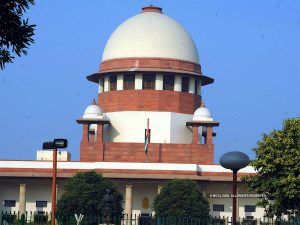Socially And Educationally Backward Classes (SEBC):

The supreme court said that the Centre alone is empowered to identify Socially and Educationally Backward Classes (SEBC) and include them in the Central List for claiming reservation benefits.
- The President (that is the Central government) alone, to the exclusion of all other authorities, is empowered to identify SEBCs and include them in a list to be published under Article 342A (1), which shall be deemed to include SEBCs in relation to each State and Union Territory for the purposes of the Constitution.
- States could only make suggestions to the President or the statutory commissions concerned for inclusion, exclusion or modification of castes and communities to be included in the List.
- The Central List is to be the “only list” for the SEBC.
- Once published, under Article 342A (1), the list can only be amended through a law enacted by Parliament, by virtue of Article 342A (2).
- In the task of identification of SEBCs, the President shall be guided by the Commission (National Commission for Backward Classes) set up under Article 338B; its advice shall also be sought by the State in regard to policies that might be framed by it.
- If the commission prepares a report concerning matters of identification, such a report has to be shared with the State government, which is bound to deal with it, in accordance with provisions of Article 338B.
- However, the final determination culminates in the exercise undertaken by the President (i.e., the Central Government, under Article 342A (1).
- However, the President’s prerogative as far as the identification and inclusion of SEBCs in the List would not affect the States’ power to make reservations in favor of particular communities or castes within the ambit of Articles 15 and 16.




